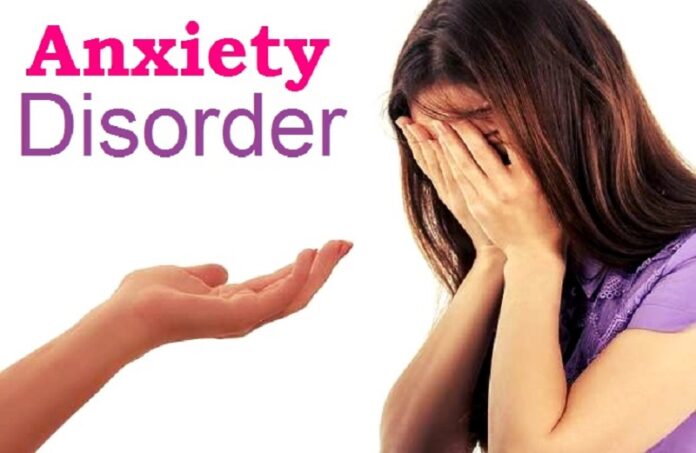Anxiety is a feeling of fear and uneasiness in anticipation of something that is yet to come or happen. According to the American Psychiatric Association (APA), anxiety disorders differ from normal feelings of nervousness or anxiousness and involve excessive fear or anxiety. The Association added that anxiety disorders are the most common of mental disorders and affect nearly 30% of adults at some point in their lives. But anxiety disorders are treatable.
Types of Anxiety Disorders
According to the U.S. Department of Health & Human Services, there are basically five (5) major types of anxiety disorders. These are:
-
Generalized Anxiety Disorder
Generalized Anxiety Disorder, GAD, is an anxiety disorder characterized by chronic anxiety, exaggerated worry and tension, even when there is little or nothing to provoke it.
-
Obsessive-Compulsive Disorder (OCD)
Obsessive-Compulsive Disorder, OCD, is an anxiety disorder and is characterized by recurrent, unwanted thoughts (obsessions) and/or repetitive behaviors (compulsions). Repetitive behaviors such as hand washing, counting, checking, or cleaning are often performed with the hope of preventing obsessive thoughts or making them go away. Performing these so-called “rituals,” however, provides only temporary relief, and not performing them markedly increases anxiety.
-
Panic Disorder
Panic disorder is an anxiety disorder and is characterized by unexpected and repeated episodes of intense fear accompanied by physical symptoms that may include chest pain, heart palpitations, shortness of breath, dizziness, or abdominal distress. People experiencing these symptoms often get tested at clinical reference laboratory.
-
Post-Traumatic Stress Disorder (PTSD)
Post-Traumatic Stress Disorder, PTSD, is an anxiety disorder that can develop after exposure to a terrifying event or ordeal in which grave physical harm occurred or was threatened. Traumatic events that may trigger PTSD include violent personal assaults, natural or human-caused disasters, accidents, or military combat.
-
Social Phobia (or Social Anxiety Disorder)
Social Phobia, or Social Anxiety Disorder, is an anxiety disorder characterized by overwhelming anxiety and excessive self-consciousness in everyday social situations. Social phobia can be limited to only one type of situation – such as a fear of speaking in formal or informal situations, or eating or drinking in front of others – or, in its most severe form, may be so broad that a person experiences symptoms almost anytime they are around other people.
Causes of Anxiety Disorders
The main causes of anxiety disorders are not known. However, according to the National Institute of Mental Health (NIMH), a combination of genetic and environmental factors may play a role. Brain chemistry is also being studied in clinical reference laboratory as a possible cause. The areas of your brain that control your fear response may be involved.
Anxiety disorders often occur alongside other mental health conditions, such as substance abuse and depression. Many people try to ease the symptoms of anxiety by using alcohol or other drugs. The relief these substances provide is temporary. Alcohol, nicotine, caffeine, and other drugs can make an anxiety disorder worse.
Other possible causes of anxiety disorders (according to the US Department of Health and Human Services, Office on Women’s Health) include:
- Hormonal changes during the menstrual cycle (in women).
- Traumatic events: Experiencing abuse, an attack, or sexual assault can lead to serious health problems, including anxiety, post-traumatic stress disorder, and depression.
Symptoms of Anxiety Disorders
A person who is battling an anxiety disorder may experience some or all of these symptoms.
- Anxious thoughts or beliefs that are hard to control. They make you feel restless and tense and interfere with your daily life. They do not go away and can get worse over time.
- Physical symptoms, such as a pounding or rapid heartbeat, unexplained aches and pains, dizziness, and shortness of breath are often reported at the clinical reference laboratory.
- Changes in behavior, such as avoiding everyday activities you used to do.
Treatment of Anxiety Disorders
According to the United States National Institute of Mental Health, the main treatments for anxiety disorders are psychotherapy (talk therapy), medicines, or both:
- Cognitive behavioral therapy (CBT) is a type of psychotherapy that is often used to treat anxiety disorders. CBT teaches you different ways of thinking and behaving. It can help you change how you react to the things that cause you to feel fear and anxiety. It may include exposure therapy. This focuses on having you confront your fears so that you will be able to do the things you had been avoiding.
- Medicines to treat anxiety disorders include anti-anxiety medicines and certain antidepressants. Some types of medicines may work better for specific types of anxiety disorders. You should work closely with your health care provider to identify which medicine is best for you.






































































